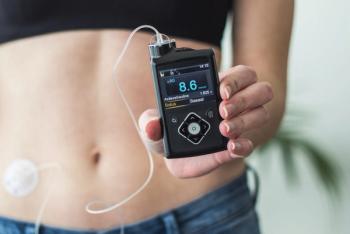
Cardiovascular Disease Rates Increase for Patients With Mental Disorders During COVID-19 Pandemic
Research reveals no significant disparities in cardiovascular disease incidence linked to mental disorders after the COVID-19 pandemic.
Investigators found no clear evidence of mental disorder disparities in cardiovascular disease (CVD) incidence during the acute period of the COVID-19 pandemic or during the subsequent years. In the study published in Open Heart, the study authors noted that the continued monitoring of CVD burden on patients, specifically marginalized groups, helps to identify the long-term impacts on CVD and worsening disparities of health.1
In another article published in Cureus, investigators examined the link between CV health and mental well-being, showing that the 2 are deeply interconnected. Although CVD has an association with mental health, mental health can also worsen or increase the risk of CVD. The authors stated, “Diagnosis with CVDs can lead to vigilance, uncertainty about one’s health, and a sense of vulnerability. Individuals in this situation may constantly worry about complications leading to stress and anxiety that can impact all aspects of their lives.” Because of this, CVD can affect sleep, impair concentration, and decrease the ability to enjoy activities.2
There has been substantial evidence that COVID-19 can cause or aggravate preexisting CVD and even trigger long-term issues with the disease. However, it is unclear what the long-term effects are. Further, COVID-19 also exacerbated mental health disorders on a global scale, with reports identifying a surge in depression, anxiety, and long COVID-related neurological symptoms. It is likely that the mental health effects of the COVID-19 pandemic could affect population health in the coming years.3,4
In the current study, investigators used national electronic health data from England, including primary care records, current registration at participating practices, and deceased patients with a date of death on or after November 1, 2019. There were 3 cohorts for each CVD outcome: myocardial infarction (MI), heart failure (HF), and stroke, and follow-up occurred from November 1 until December 31, 2023. For the analysis of mental disorders and CVD incidence, investigators included adults at least 40 years old on November 1, 2019, or those who turned 40 during the follow-up period. For mental disorder outcomes, investigators analyzed data on schizophrenia, bipolar disorder, and depression.1
Investigators included 65 million patients in the calculation of age-standardized incidence rates, with the analysis of CVD incidence by mental health disorder including approximately 32 million patients for each of the CVD outcomes. The incidence during the acute phase of the COVID-19 pandemic showed a decrease in each CVD outcome as well as the incidence of schizophrenia, bipolar disorder, and depression—except for stroke, which did not experience the same decrease for patients with schizophrenia. For the entire period, the rate of MI was approximately 48%, 59%, and 42% higher for schizophrenia, bipolar disorder, and depression, respectively. For HF and stroke, the rates were 107%, 84%, and 45%, respectively, and 84%, 83%, and 40%. By 2021, the rates of MI, stroke, and HF recovered to prepandemic levels for all comparison groups.1
For patients aged 40 to 100 years old, 383,365 had an MI, 868,590 were diagnosed with HF, and 455,300 had a stroke. The mean age of CVD diagnosis for people with each mental disorder was approximately 3 to 10 years younger compared with those without these disorders, varying by mental disorder and CVD. The gap was largest for HF and patients with schizophrenia, who averaged 10 years younger at diagnosis compared with those without the mental disorder. Investigators noted that the proportion of patients who were Black, South Asian, or of mixed ethnicity had a greater incidence of schizophrenia, but it was lower for those with bipolar disorder and depression.1
“Our analyses revealed that, as expected, CVD incidence was markedly higher in those with versus without schizophrenia, bipolar disorder, and depression,” the study authors said.1 “However, there was generally no evidence that this disparity worsened during the acute period of the pandemic or during the subsequent years.”
READ MORE:
Are you ready to elevate your pharmacy practice? Sign up today for our
REFERENCES
1. Fleetwood K, Nolan J, Mercer SW, et al. Impact of the COVID-19 pandemic on incidence of myocardial infarction, heart failure and stroke, by mental disorder diagnosis, in England, 2019-2023: a cohort study. Open Heart. 2025;12(2):e003398. Published 2025 Oct 22. doi:10.1136/openhrt-2025-003398
2. Borkowski P, Borkowska N. Understanding Mental Health Challenges in Cardiovascular Care. Cureus. 2024;16(2):e54402. Published 2024 Feb 18. doi:10.7759/cureus.54402
3. Vosko I, Zirlik A, Bugger H. Impact of COVID-19 on cardiovascular disease. Viruses. 2023;15(2):508. Published 2023 Feb 11. doi:10.3390/v15020508
4. Omidoyin S. The implications of COVID-19 on mental health: Addressing the global mental health challenges. JoGHNP. Published online May 2, 2024:e2024001. doi:10.52872/001c.117080
Newsletter
Pharmacy practice is always changing. Stay ahead of the curve with the Drug Topics newsletter and get the latest drug information, industry trends, and patient care tips.




































































































































